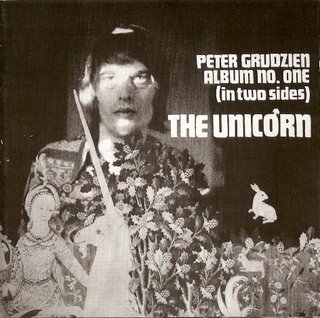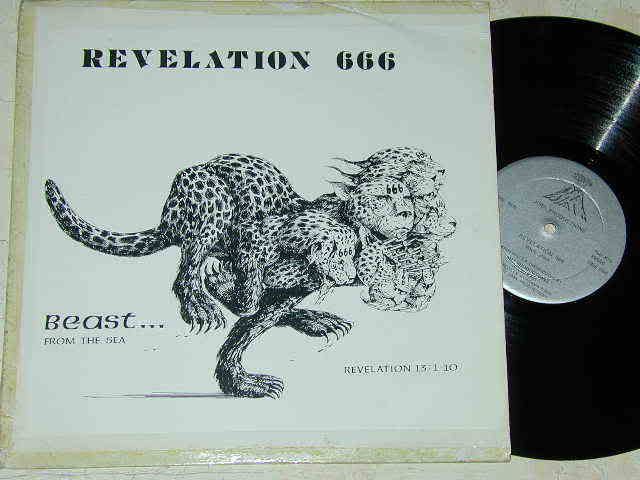 In the beginning there were "lists." Primitive mail order catalogs that were typed, full of typos, shrunk and photocopied and folded and mailed and this was how collectors of rare private press and obscure psychedelic and related records communicated back in the last century, in the dark times before the internet.
In the beginning there were "lists." Primitive mail order catalogs that were typed, full of typos, shrunk and photocopied and folded and mailed and this was how collectors of rare private press and obscure psychedelic and related records communicated back in the last century, in the dark times before the internet.Lists were followed by the earliest attempts at guide books, The Acid Trip, Flashback and a few I'm just not recalling at the moment; horribly incomplete and filled with misinformation. The BIG BANG was the 4th Edition of the Goldmine Magazine Record Collector Price Guide, the first official book to contain the titles and information (and values) for these obscure LPs. This was, for many of us, a tragedy beyond comprehension. Record stores and dealers who had previously put these records out for $1 when they found them suddenly understood what they had. Damn their eyes.
Fast forward to 2007 and the state of the art for guide books is a new book out of Sweden called The Acid Achives: The Ultimate Guide to Underground Sounds 1965-1982. The book limits its content to records released in the United States and Canada (bypassing Europe, Asia and South America which represent content for another 5 volumes) but manages to offer a huge catalog of information nonetheless. Reviews were written by a group of people and I contributed a small pile to the mix (in the name of full disclosure I also was involved in the reissue of a few of the records from the first list below and I've marked those with a * after the name). I also compiled two "Top Ten" lists of records in the style or spirit of those compiled in the book. One list represents a favorite stack of ten records that are not reviewed in the book, the other lists ten which are. All twenty are worth sticking on a list for future research if you don't recognize some of them. First, the top ten from LPs that are contained in the Archives.
Peter Grudzien "The Unicorn" – The people who list it under “so bad it’s good” completely miss the fact that it’s actually just good, probably great. The most focused and unique vision I’ve ever encountered on a record album. The record has been reissued on CD. Original copies are very rare and expensive.
Bobb Trimble "Harvest of Dreams" – As thick and multi-layered as the first Snoop Dog record; a genuinely psychedelic LP from a closeted New England musician. You'll find it hard to believe. His first record Iron Curtain Innocence is rarer but this is the better one. There is a Parallel World CD reissue that collects tracks from both albums, and a UK Radioactive label bootleg CD of this one.
Plastic Cloud – Same – This and the first Country Joe and The Fish are the records to pull out when asked “So, what’s this psychedelic music I keep hearing about?” Had they been from San Francisco they’d be a household name. A Canadian band whose one record has been reissued on LP and CD; originals now selling for over a grand.
McKay "Into You"* – The best description, “Jerry Garcia jamming with Neil Young on Tonight’s The Night” really isn’t very close. Great songwriting (a rarity on private-press records) and a loose feel that just works magic. The original LP was a pressing of 300 copies and has never had the respect it really deserves so it's $400-$600 price tag is actually a bargain if you're into original LPs. The 1993 LP reissue is all analog from masters and also a 300 press that's hard to find but worthwhile. The CD reissue is also from the masters and has 16 non-LP bonus tracks that are really good.
Perry Leopold "Experiments in Metaphysics" – If the question is “How can a solo acoustic and voice record be psychedelic?” then this is the answer. Philadelphia singer/songwriter pressed this LP in a bronze sleeve without a title and gave them away on street corners. Originals are very expensive today but a CD reissue is very affordable.
Rayne- Same* – Completely lost in time and the one record I can play for friends who don’t like “psych music.” Originals are $1,000+, the 1994 reissue LP is gorgeous and a new LP reissue is just out now on the German Shadoks label. Never on CD for some reason.
Anonymous "Inside the Shadow"* – Like Rayne, just not of a particular time, and like McKay, a record of nothing but great songs. Check the lengthy review at the Acid Archives site for all you need to know about this amazing record.
Numbers Band "Jimmy Bell's Back In Town" – Maybe the most underrated record in the book, surely the most undervalued. And hey, if you “don’t like horns” then give me your copy of Forever Changes or shut up. From Kent, Ohio. Fantastic. Well under $100 as an original and well worth it. A CD is out and not too hard to find.
Lazy Smoke "Corridor of Faces" – So the lead singer swears he wasn’t trying to sound like John Lennon, I’ve lied too. The garage version of Magical Mystery Tour. Boston-area I believe, LP and CD reissues are around but the strangest thing is that NONE of them actually reproduce the original, very simple, black and white sleeve.
Brigade "Last Laugh" – There is an earnestness here that just will not be contained. Can’t so much recommend it as not live without it. I hated this record for years and one day, stuck in traffic in Pittsburgh, it just opened up to me. Amateurish, hell yeah, but wonderful.
Now for the ten from the general population. these are the records I suppose that would go to the desert island if push came to shove.
Bob Dylan "Freewheelin'" – The first (of 8 as I count them) museum quality masterworks by the greatest writer of his generation. A blend of Woody Guthrie, Buddy Holly, James Dean and, well, everything.
Jimi Hendrix "Axis: Bold As Love" – His guitar is as strong as on the debut, but it’s his songwriting that’s the focus here. “Little Wing” is as good a song as any ever written.
Forever Amber “Love Cycle” – David Wells said that if this had been a major label LP it’d be remembered as one of the best of the era; the fact that it was made by some UK art school students who then vanished makes it an accomplishment of epic proportions. More memorable melodic hooks per inch than any other record, ever. A multi-thousand dollar rarity, only 99 copies were pressed in 1969. But it is as good as Pet Sounds. There's a US LP reissue that sounds awful and a European one that sounds great. Also a CD that's out of print but perfect.
Tim Hardin "3 Live" – The LP ends with “Lenny’s Tune” for Lenny Bruce and the sound of one junkie singing to another without pretense is as heartbreaking as the best Hank Williams.
Van Morrison "Moondance" – All his best records are a battle between R and B and mysticism and it’s here that the two meet for some pints in the local pub.
The Beatles “The Beatles’ Second Album” – The very record that introduced an entire generation of white American kids to black American music; after this, there was no going back. Also has "She Loves You" which is the best song about an orgasm this side of Beefheart's "White Jam."
Phil Ochs "Pleasures of the Harbor" – The best of his electric catalog and “The Crucifixion” is his greatest moment.
Paul Butterfield Blues Band "East West" – Next to Hendrix, Michael Bloomfield was the greatest blues-based rock guitarist of the 1960s and his playing here will stop any argument to that in its tracks.
Grateful Dead "Blues for Allah" – Unlike many of his peers, Garcia occasionally makes these jumps in his understanding of the guitar and it’s never more evident than here.
Bob Dylan “Love and Theft” – On Dylan’s hands-down best record of all he’s finally grown up to be the character he was playing at being in 1965-66. Maybe the best record I own.


















